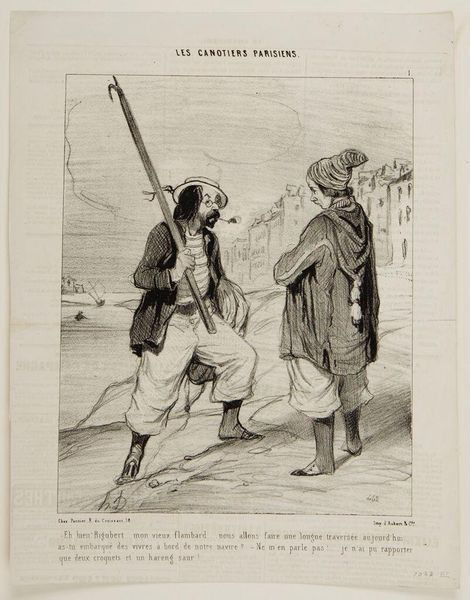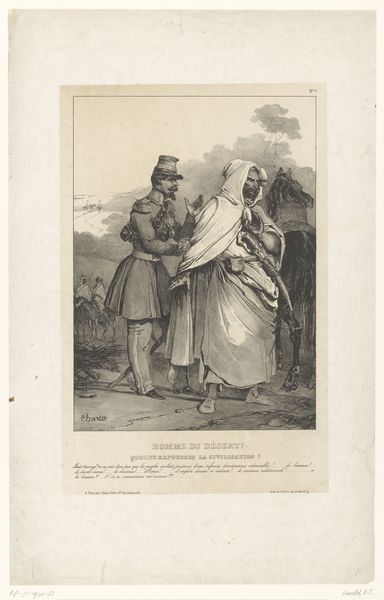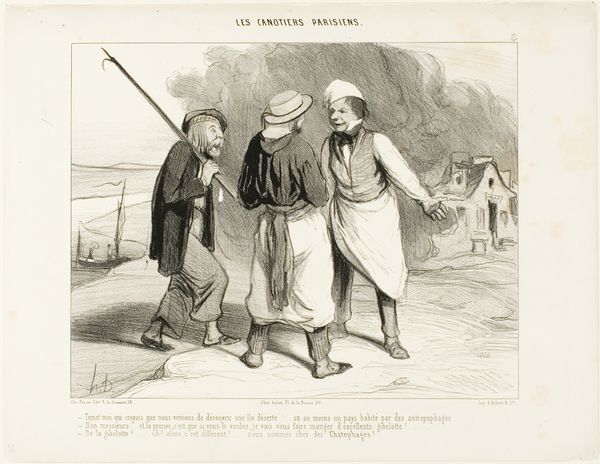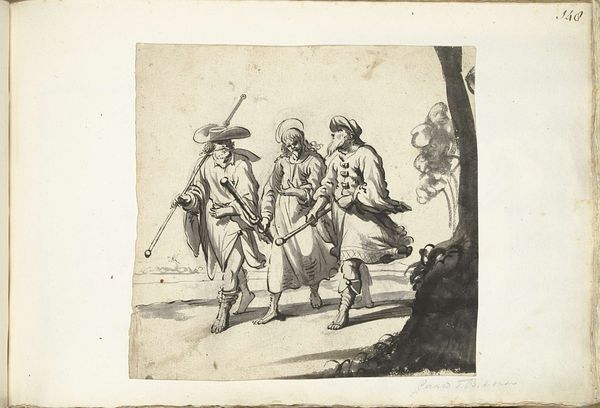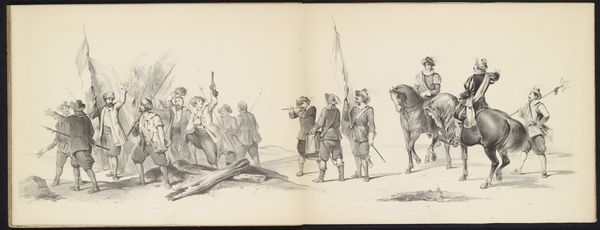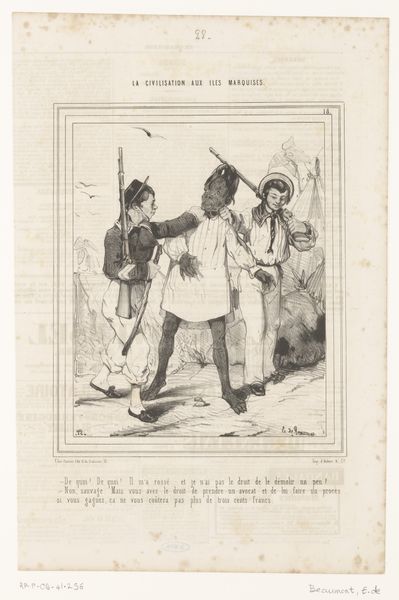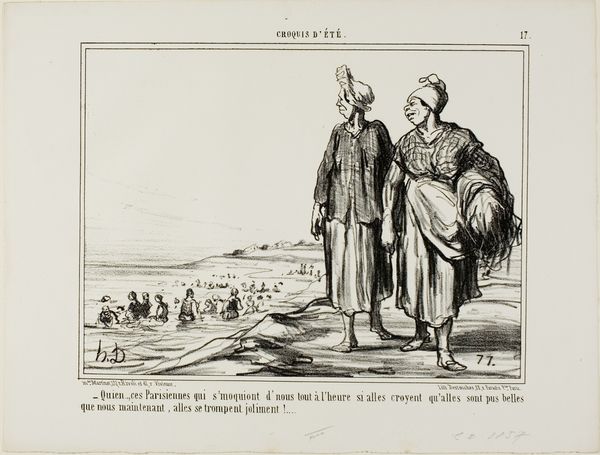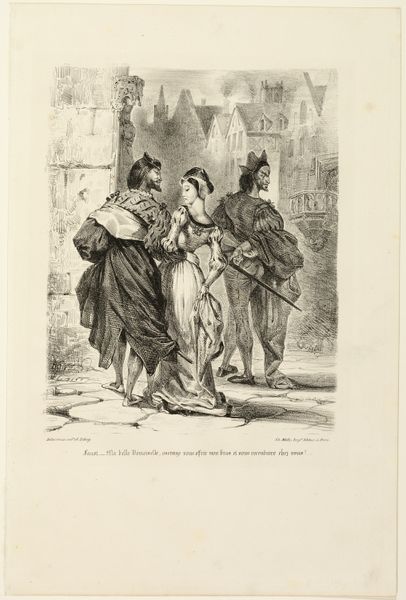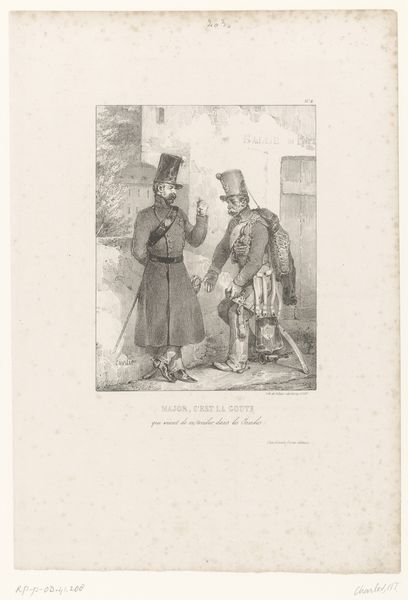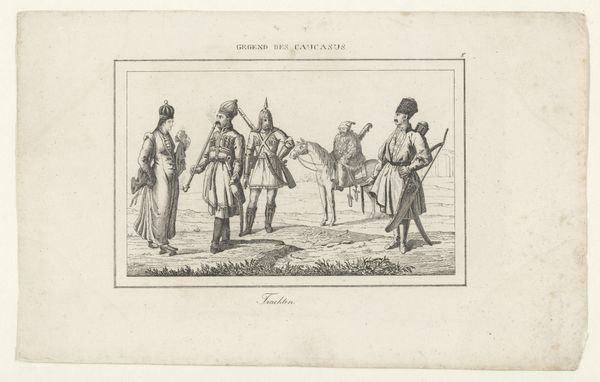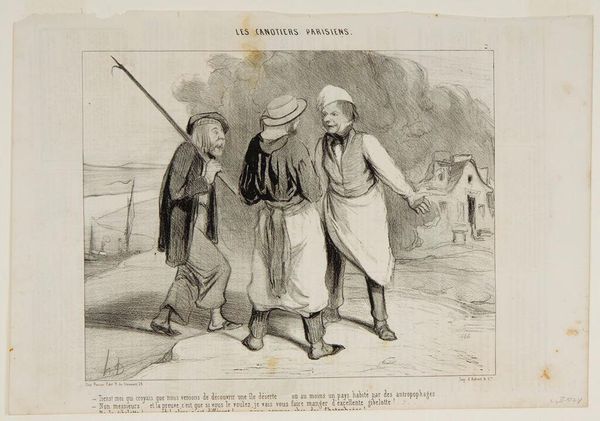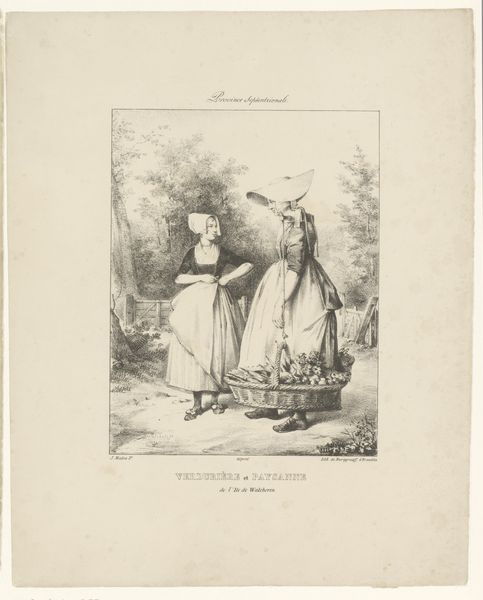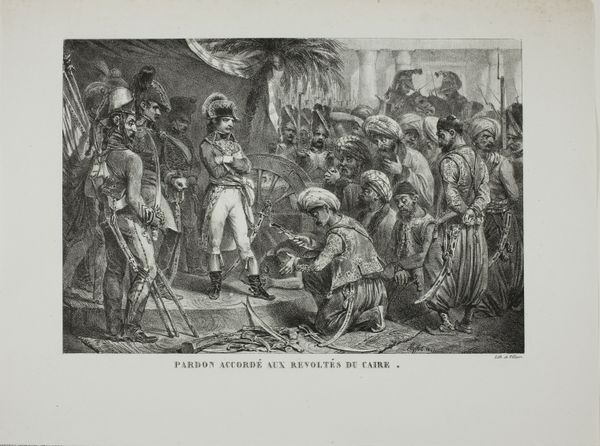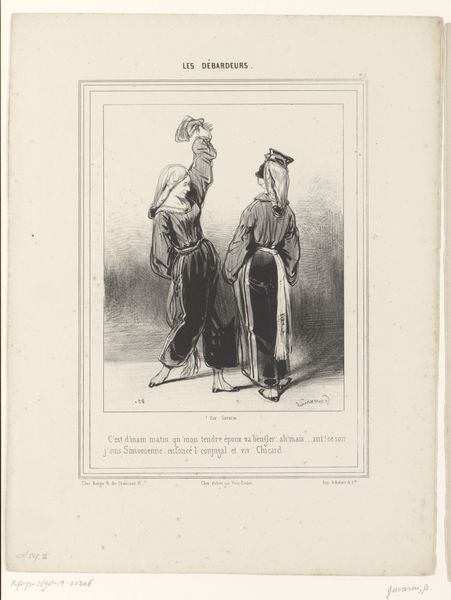
“- All right Rigobert, my old friend.... we are going to make a long trip today.... did you bring enough provisions on board of our vessel? - Don't talk about it.... all I was able to bring along are two biscuits and a red herring,” plate 1 from Les Canotiers Parisiens 1843
0:00
0:00
drawing, lithograph, print, paper
#
portrait
#
drawing
#
narrative-art
#
lithograph
# print
#
paper
#
romanticism
#
comic
#
genre-painting
Dimensions: 246 × 195 mm (image); 342 × 255 mm (sheet)
Copyright: Public Domain
Curator: This lithograph by Honoré Daumier, created in 1843, is titled “- All right Rigobert, my old friend.... we are going to make a long trip today.... did you bring enough provisions on board of our vessel? - Don't talk about it.... all I was able to bring along are two biscuits and a red herring,” plate 1 from *Les Canotiers Parisiens*, currently residing here at the Art Institute of Chicago. Its graphic presentation lends a quirky charm. Editor: The exaggerated features of the figures – the long face and spindly legs of the speaker, and the slightly lumpen other figure - evoke a peculiar comic quality. The texture of the lithograph creates a lovely visual interplay. Curator: The artist's use of lithography allowed for mass production, making it available to a broad audience. One might explore the context in which Daumier created these. What commentary was Daumier making about Parisian society through the lens of these boatmen? Is he emphasizing a difference between the high-minded Romantic artistic styles and the means of material creation? Editor: Daumier certainly seems invested in the realities of production here. Look at the emphasis on line and form, it is not exactly precise rendering. In a broader context, one could analyze the paper and ink used in the production of the prints. Also, considering that prints were circulated broadly in newspapers and as separate broadsides is key. Were such works ever seen as 'high' art? Curator: The text provides a glimpse into their socio-economic realities: a meagre ration of "two biscuits and a red herring." Consider that prints, and indeed this image, became accessible objects for many working Parisians. Editor: Considering Daumier's frequent depictions of the struggles of the working class, it seems right to say that there is definitely an aspect of material sympathy here. The work isn't sentimental exactly, but nor is it unconcerned. The focus on printing and on reproducing images has a democratization embedded inside it. Curator: His visual vocabulary is accessible yet nuanced, a clever means of engaging a wide range of viewers in the social narratives of his time. I am inclined to spend some more time with Daumier, here. Editor: Indeed, it offers an entry point into considering not just the subjects represented, but how their image itself became part of the culture, consumed alongside the meager fare the depicted figures can afford.
Comments
No comments
Be the first to comment and join the conversation on the ultimate creative platform.
